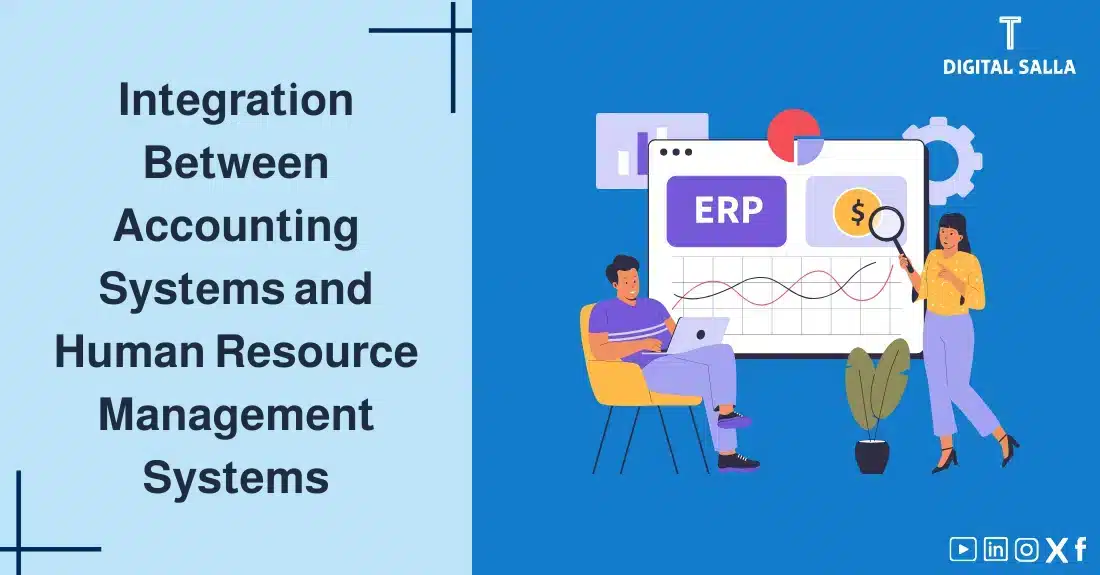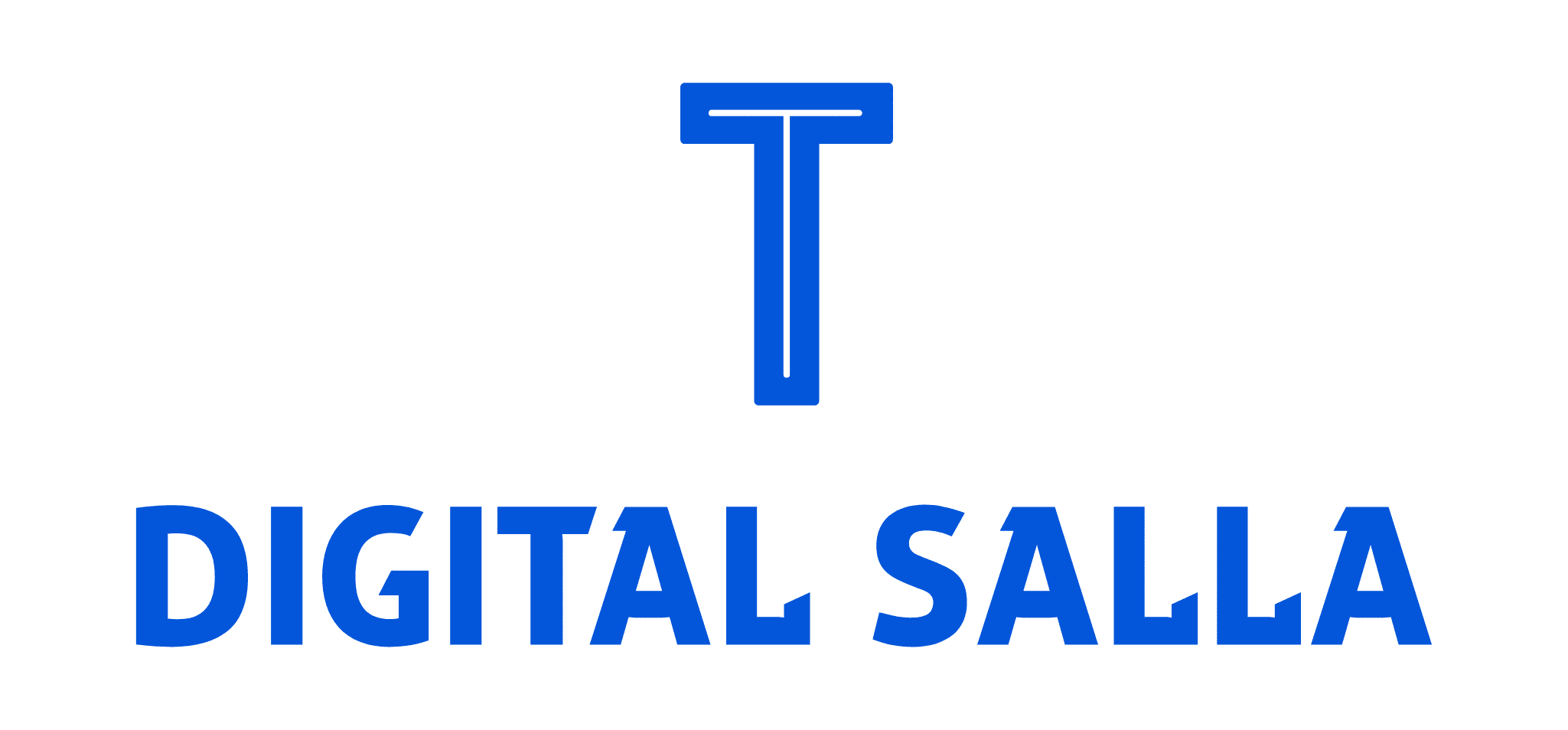Integration Between Accounting Systems and Human Resources Management Systems

The integration of Accounting Systems and Human Resources Management Systems (HRM) is an important strategic step that achieves significant benefits for companies, as it enables them to improve operational efficiency, enhance the accuracy of financial data, save time and effort, and gain comprehensive insights into employee costs and performance. In this article, we will discuss the integration of Accounting Systems and Human Resources Management Systems, define its benefits, and review the practical steps to achieve it, focusing on the importance of this integration in improving the quality of financial data and supporting the decision-making process.
What are Accounting Systems?
Accounting Systems are software programs or systems used to record, process, and analyze an entity’s financial data. These systems help automate accounting processes, prepare financial statements, generate financial reports, and ensure compliance with accounting standards.
What are Human Resources Management Systems (HRM)?
Human Resources Management Systems (HRM) are software programs or systems used to manage human resources functions in the entity, such as recruitment, training, performance evaluation, and payroll and benefits administration.
Benefits of Integration Between Accounting Systems and Human Resources Management Systems:
The integration of Accounting Systems and Human Resources Management Systems achieves many benefits, the most important of which are:
- Improved Accuracy of Financial Data: Integration reduces human errors in data entry, as data is automatically transferred between the two systems. This ensures the accuracy of financial data related to salaries, benefits, and taxes. Streamlined data flow is a major benefit of integrating Accounting Systems and Human Resources Management Systems.
- Increased Efficiency of Operations: Integration automates many manual tasks, such as calculating salaries and preparing tax reports, saving time and effort and reducing operating costs.
- Enhanced Compliance with Laws and Regulations: Integration helps ensure the company’s compliance with labor laws and tax regulations related to salaries and benefits.
- Improved Internal Control: Integration strengthens internal control over financial data by providing a clear audit trail for all transactions related to human resources.
- Comprehensive Insights into Employee Costs: Integration enables a more accurate analysis of employee costs, including salaries, benefits, and taxes, which helps in better managing labor costs. These insights are considerably easier to obtain when there is integration of Accounting Systems and Human Resources Management Systems.
- Improved Budgeting Process: Integration provides accurate data on employee costs, which helps in preparing more accurate budgets.
- Supporting Decision-Making: Integration provides integrated financial information that helps management make informed decisions about hiring, compensation, and human resource management. Informed decision-making is a key outcome of integrating Accounting Systems and Human Resources Management Systems.
- Improved Employee Experience: Integration can improve the employee experience by streamlining the payroll and benefits management process.
- Reduced Data Duplication: Integration prevents entering the same data into two separate systems, reducing data duplication and improving work efficiency.
- Enhanced Data Security: Integration can enhance the security of financial and human resources data by applying unified security controls. Security is often a driving factor in initiatives to integrate Accounting Systems and Human Resources Management Systems.
How to Achieve Integration Between Accounting Systems and Human Resources Management Systems:
Integration between Accounting Systems and Human Resources Management Systems can be achieved through several methods, including:
- Using Application Programming Interfaces (APIs): APIs allow data to be automatically exchanged between accounting systems and HRM systems. APIs are one of the most common and effective ways to achieve integration between different systems.
- Using Middleware: Middleware acts as a bridge between accounting systems and HRM systems, facilitating data exchange between them.
- Using Enterprise Resource Planning (ERP) Systems: ERP systems offer integrated solutions that include accounting and human resource management functions, eliminating the need for integration between separate systems.
- Developing Custom Integration: In some cases, it may be necessary to develop custom integration between accounting systems and HRM systems to meet the company’s specific needs.
Data Exchanged Between Accounting Systems and Human Resources Management Systems:
- Employee Data: Such as name, employee ID, department, salary, and benefits.
- Payroll Data: Such as working hours, deductions, taxes, and net pay.
- Leave Data: Such as leave balances, leave requests, and leave approvals.
- Recruitment Data: Such as date of hire, job title, and performance evaluations.
- Tax Data: Such as income tax and social security information. Having this data readily available within both systems simplifies many processes and is one of the advantages of integrating Accounting Systems and Human Resources Management Systems.
Importance of Integrating Accounting Systems and Human Resources Management Systems:
Integrating Accounting Systems and Human Resources Management Systems is crucial for the following reasons:
- Ensuring Accuracy of Payroll Calculations: Integration ensures accurate calculation of salaries, benefits, and taxes by automatically exchanging data between the two systems.
- Improving Operational Efficiency: Integration automates many manual processes, saving time and effort and reducing errors.
- Enhancing Compliance with Laws and Regulations: Integration helps ensure the company’s compliance with labor laws and tax regulations related to salaries and benefits.
- Providing a Comprehensive View of Labor Costs: Integration enables a more accurate analysis of labor costs, which helps in better human resource management and decision-making. The improved visibility into labor costs is a frequent justification for integrating Accounting Systems and Human Resources Management Systems.
- Improving Financial Reporting: Integration provides accurate and comprehensive data for preparing financial statements and other financial reports.
- Supporting Decision-Making: Integration provides integrated financial information that helps management make informed decisions about hiring, compensation, and human resource management. The more informed decision making is a direct result of better integrated Accounting Systems and Human Resources Management Systems.
Challenges in Integrating Accounting Systems and Human Resources Management Systems:
- System Compatibility: Accounting Systems and Human Resources Management Systems may not be compatible with each other, which may hinder the integration process.
- Cost of Integration: The cost of integrating systems can be high, especially if custom integration needs to be developed.
- Complexity of the Process: The process of integrating systems can be complex and requires specialized technical expertise.
- Data Security: Appropriate security measures must be taken to ensure the confidentiality and integrity of the data exchanged between the two systems.
- Need for Training: Employees may need training on how to use the integrated systems effectively.
Best Practices for Integrating Accounting Systems and Human Resources Management Systems:
- Clearly Define Integration Goals: Integration goals must be clearly defined, such as improving data accuracy or increasing operational efficiency. Having clear objectives helps streamline the project of integrating Accounting Systems and Human Resources Management Systems.
- Choose Compatible Solutions: Accounting Systems and Human Resources Management Systems that are compatible with each other or that offer standard Application Programming Interfaces (APIs) should be chosen.
- Involve All Stakeholders: All stakeholders, such as the accounting department, the human resources department, and the IT department, should be involved in the integration process.
- Test the Integration Thoroughly: The integration must be thoroughly tested before it is put into operation to ensure that it works correctly.
- Provide Training to Employees: Training must be provided to employees on how to use the integrated systems effectively.
- Monitor Integration Performance: The performance of the integration should be monitored periodically to ensure that it is achieving the desired objectives.
Impact of Systems Integration on the Quality of Financial Statements:
The integration of Accounting Systems and Human Resources Management Systems improves the Financial Reporting Quality by:
- Increasing the Accuracy of Financial Data: Integration reduces human errors in data entry and ensures the accuracy of data related to salaries, benefits, and taxes.
- Improving the Efficiency of Financial Reporting: Integration provides accurate and comprehensive data for preparing financial statements and other financial reports.
- Enhancing Internal Control: Integration strengthens internal control over financial data by providing a clear audit trail for all transactions related to human resources.
- Improving Compliance with Accounting Standards: Integration helps ensure the company’s compliance with International Financial Reporting Standards and other applicable accounting standards. Companies aiming for best practices should strongly consider integrating their Accounting Systems and Human Resources Management Systems.
Role of Technology in Enhancing Systems Integration:
Technology plays an important role in enhancing the integration of Accounting Systems and Human Resources Management Systems, especially through:
- Cloud Computing: Cloud computing facilitates the integration of systems by providing a common platform for data and applications.
- Application Programming Interfaces (APIs): APIs provide a standard way to exchange data between different systems.
- Artificial Intelligence (AI): AI can be used to automate tasks related to systems integration, such as data matching and error detection. AI will continue to reshape how we think about Accounting Systems and Human Resources Management Systems.
Conclusion
Regulatory changes fundamentally reshape how companies prepare financial statements. Understanding and managing the Impact of Regulatory Changes on Financial Statements is no longer optional; it’s essential for compliance, accurate reporting, and maintaining stakeholder trust. Proactive adaptation to this ever-evolving Impact of Regulatory Changes on Financial Statements is crucial for long-term business health and to learn more about this topic, you can refer to our article on: [The Role of Accounting Software in Financial Analysis and Decision Making]. .
